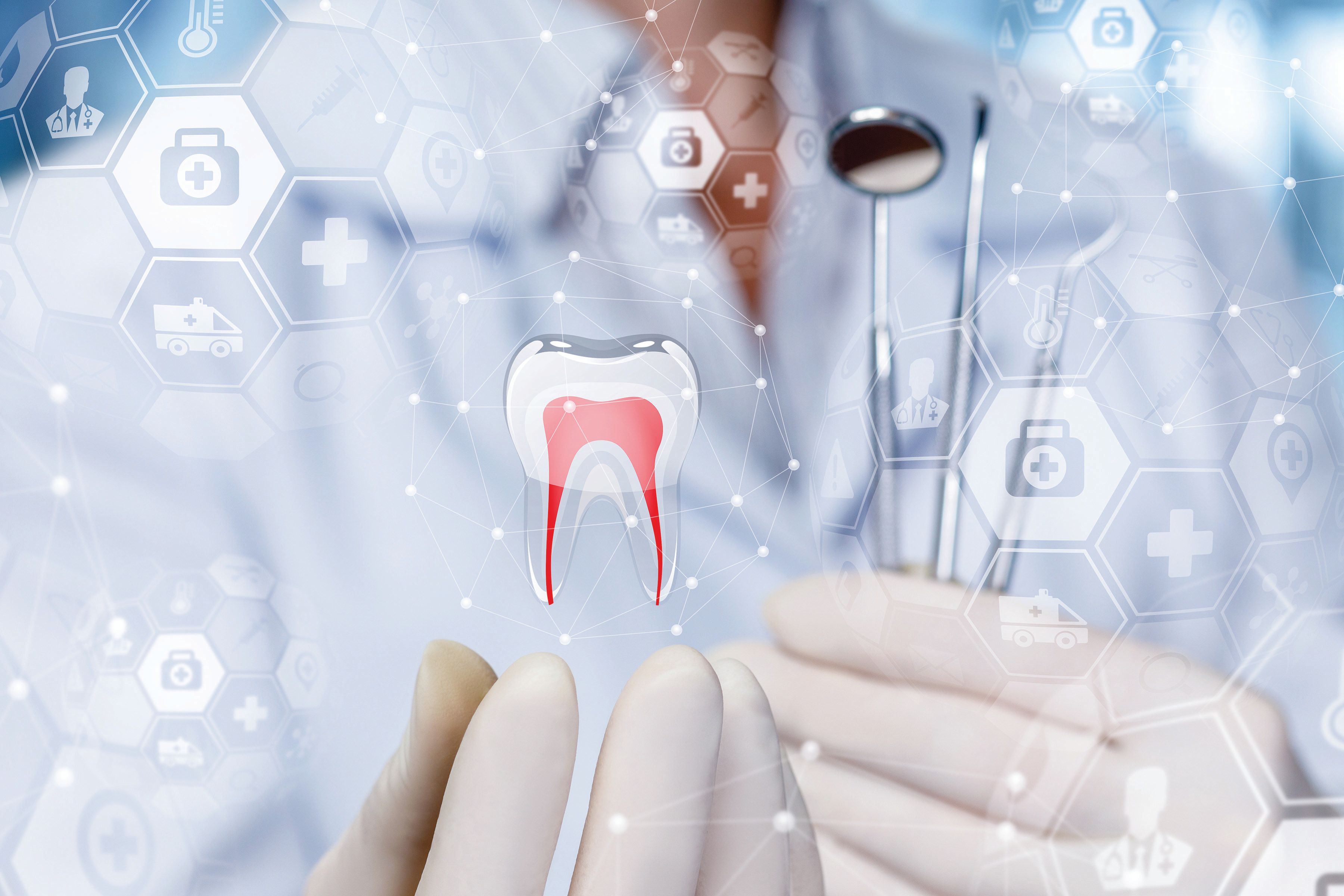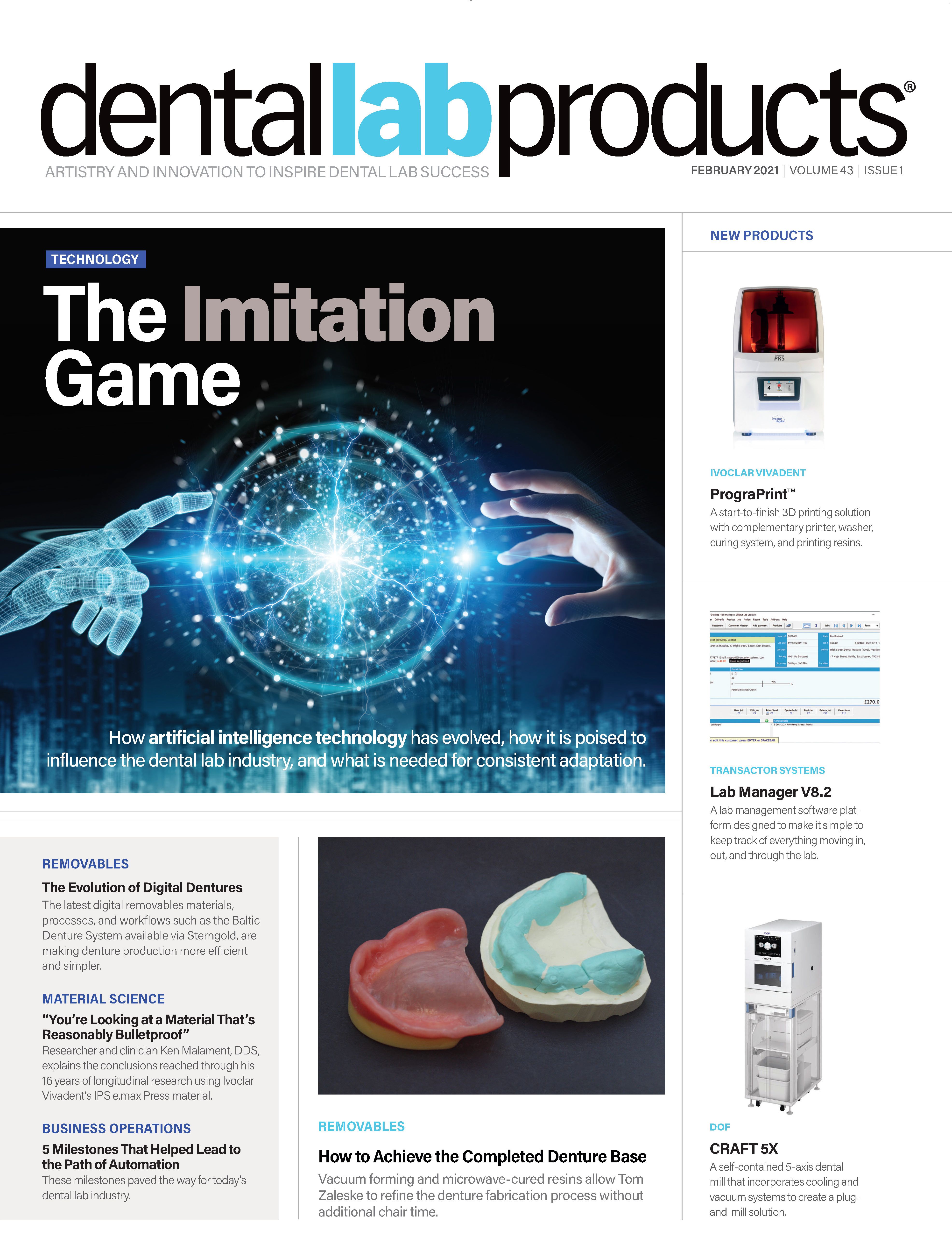5 Milestones That Helped Lead to the Path of Automation
This month's The List takes a look at milestones that helped pave the way for today’s dental lab industry and for a future that will surely be impacted more by AI and machine learning.
NATALI_MIS / STOCK.ADOBE.COM

Much has been written about the early methods to treat oral pain and how Baltimore was home to the first dental school in the United States, some 180 years ago. Less publicized is the history of how dental laboratories came about and how far the role of lab technicians and laboratory technological advances have come over the years. As addressed in this month’s cover story, artificial intelligence (AI) evolved and is poised to influence the dental lab industry. Here are 5 milestones that paved the way for today’s dental lab industry and for a future that will surely be impacted more by AI and machine learning.
1. 1877
Dr William H. Stowe opened a dental laboratory in Boston and was later joined by his cousin, Frank F. Eddy. The laboratory (later known as Stowe and Eddy) was generally acknowledged to be the first commercial dental laboratory in America that was separate from a private dental practice. According to the National Board for Certification (NBC) in Dental Laboratory Technology,Stowe was particularly noted for his prosthetic skills, and eventually found that he had little time for his own dental practice after accepting laboratory work from all the dentists who sought his services. His laboratory service proved to be so successful that it indicated the potential need for a dental laboratory capable of serving the profession at large, as opposed to Stowe and Eddy, which had to limit the number of dentists it could assist.
2. 1950
By the mid-1900s, 2 national organizations were claiming to represent the dental laboratory industry, but there was no single unified organization. A group of dental laboratory owners from throughout the country met in Chicago in 1950 and agreed to form a national, federated association, similar in organization to the American Dental Association, with state-level association components. The meeting marked the beginning of the National Association of Dental Laboratories (NADL), which represents nearly 1000 commercial laboratories nationwide today.
3. Mid-1950s
Early on, the NADL concentrated on the areas of recognition and education. In 1954, the NADL Education Committee began developing a certification program, which would set skill standards. The following year, the NADL Executive Council elected 7 people to the newly formed NBC, which adopted policies and approved examinations for the certification program. The first Certified Dental Technician (CDT) tests were administered in October 1958, and the first CDT certificates were awarded in March 1959. Today, there are approximately 5500 technicians with active CDT certificates.
4. Early 2000s
Much of the lab industry was faced with a rough transition from analog to digital production, which transformed processes, materials, and workflow. Just as technology and advancements were improving efficiencies, a number of obstacles came about, including a recession in 2008, a decline of accredited dental laboratory programs, overseas manufacturing, regulatory forces, and laboratory consolidation. But despite these hurdles, lab technicians continued to thrive, innovate, and impact a population more aware than ever of the importance of good oral health.
5. Present Day
Although many large dental labs are doing their part to help deliver great oral care services, 1 well-known lab celebrated half a century of operations when Glidewell commemorated its 50th year of operations with an employee celebration on its campus in Irvine, California, last year. The lab’s success has come in large part by taking advantage of new technologies along the way. Today, the dental lab industry is set to take advantage of AI technology in much the same way as most industries.
